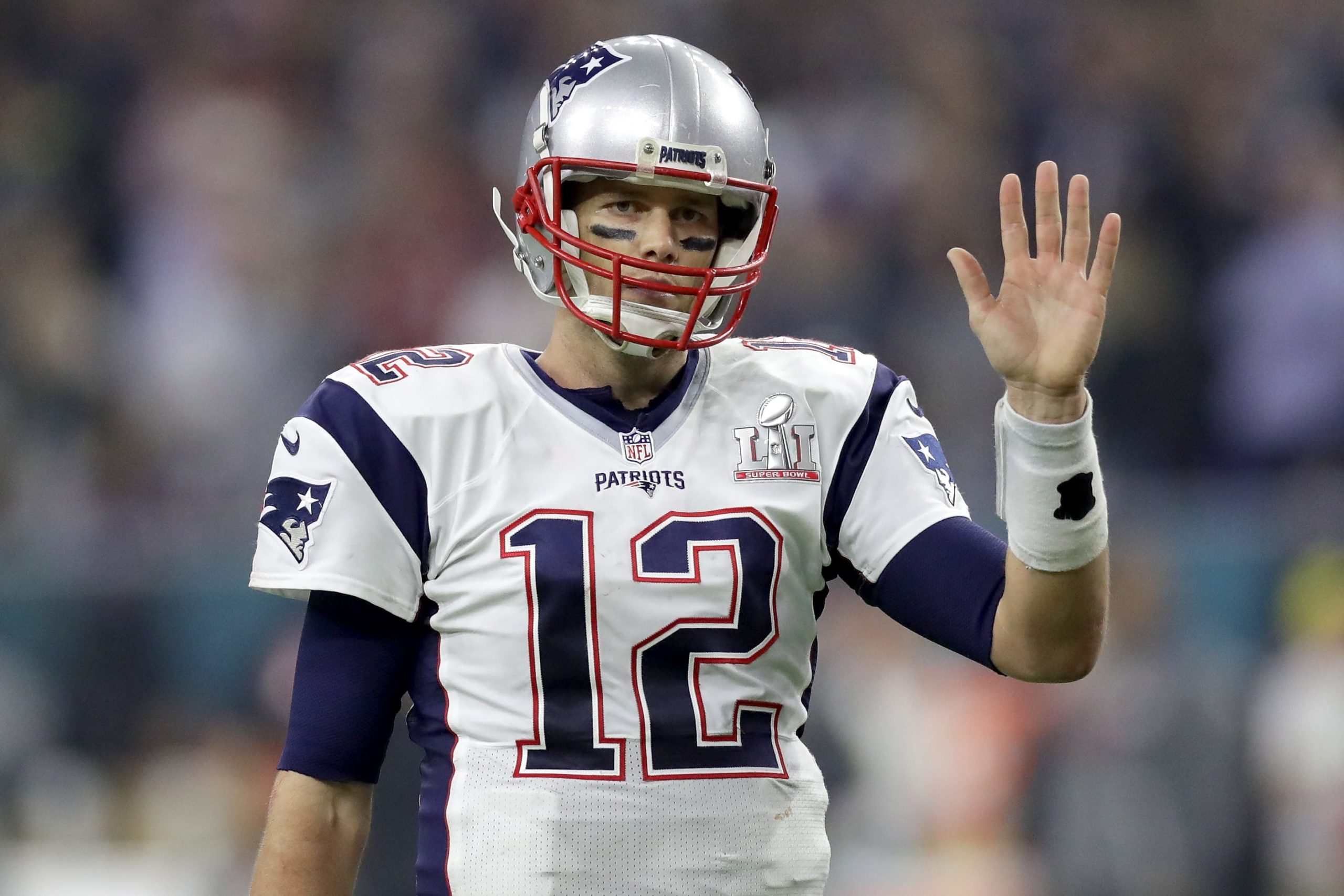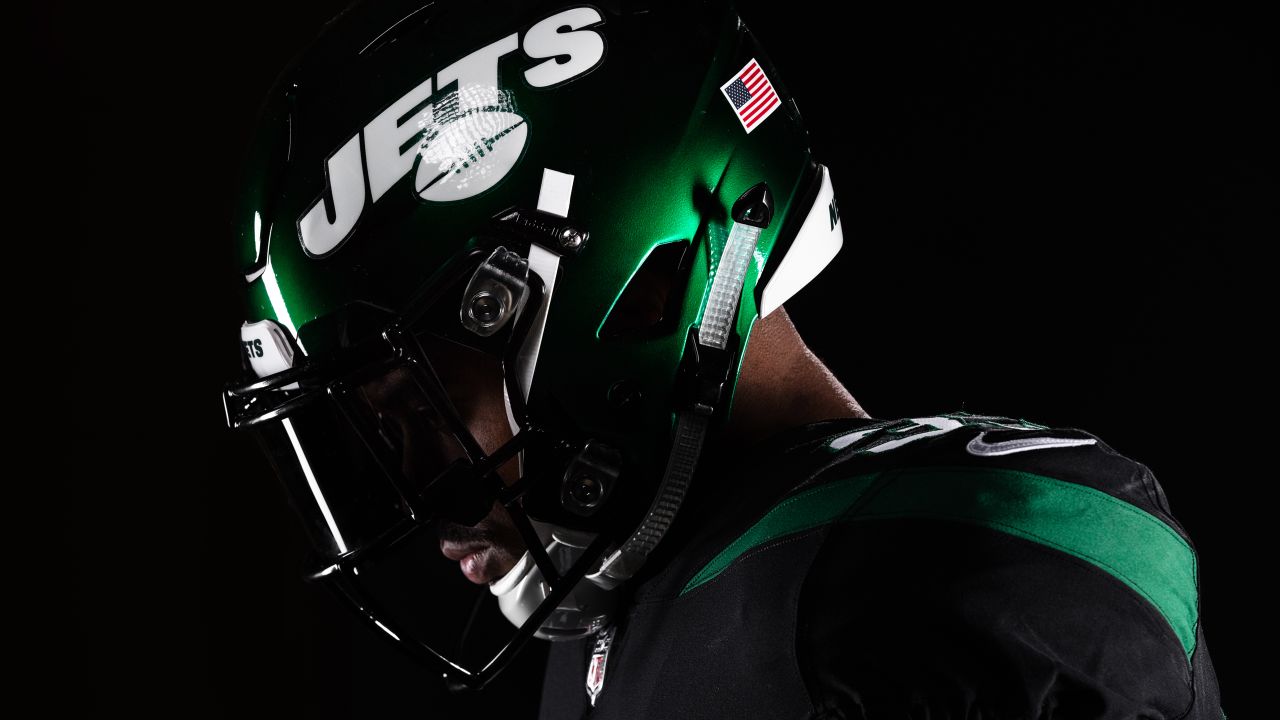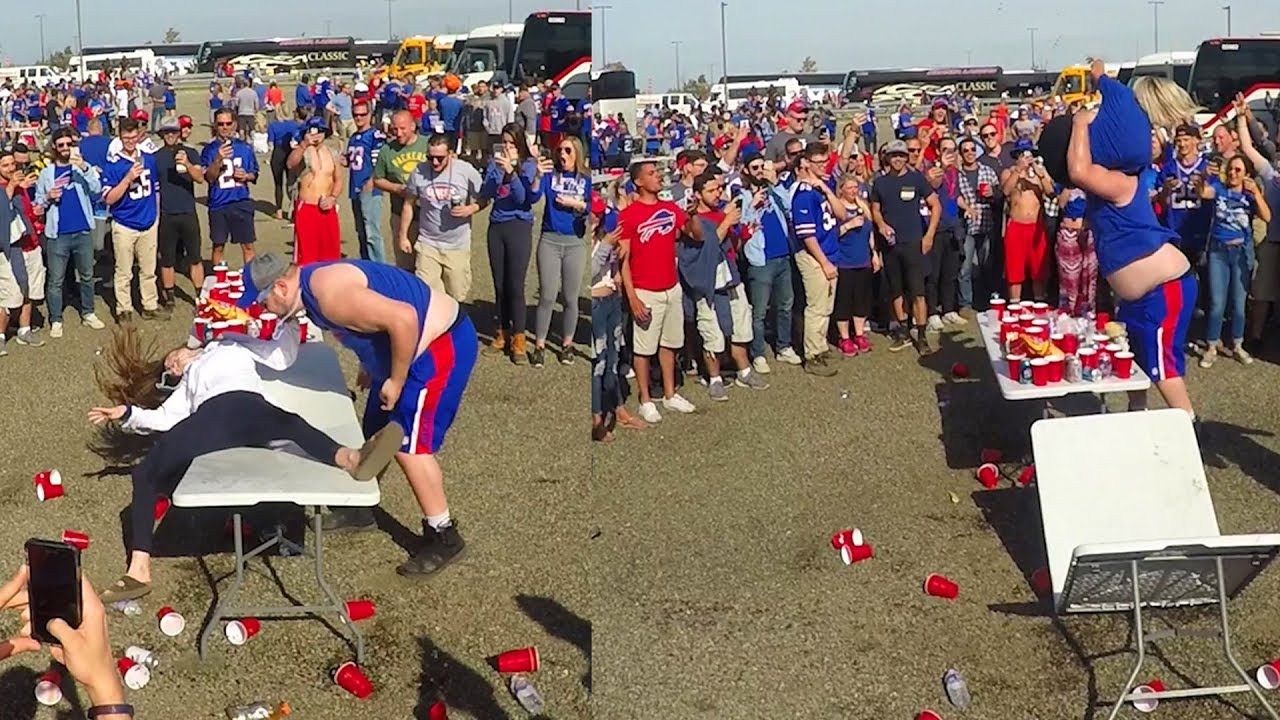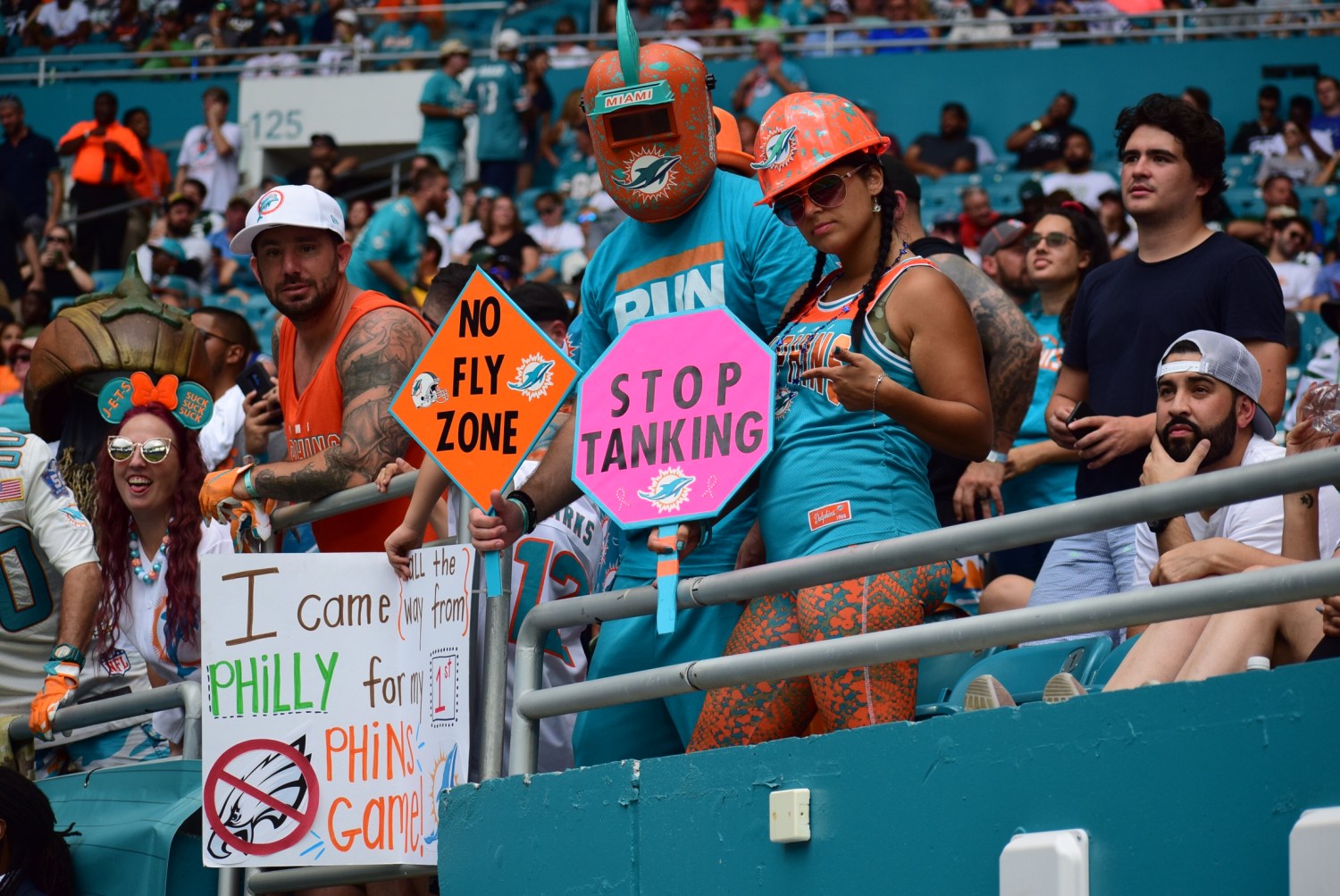
Welcome to my new series, where I will take a deep dive into each NFL division, looking at what mattered in 2019, which of course shapes what will matter in 2020. This series will provide in-depth, team-by-team analysis on coaching, offensive lines, running games, and passing attacks.
I grabbed my advanced stats and metrics from Player Profiler, Pro Football Focus, Football Outsiders, and Sports Reference.
Watch for updates during Training Camp/Preseason.

New England Patriots
Coaching
We all know Bill Belichick and Josh McDaniels are two of the best coaches in the game. With Brady under center, they typically ran one of the fastest paces in the league while turning out high-play volumes. Now, with Brady gone and what seems to be the start of the Jarrett Stidham era, will the Patriots’ coaching staff dial it back the way they did when Brady launched his career in the early 2000’s?
Offensive Line
The Patriots’ offensive line took a step back in 2019. It was still a top 12 unit, but was at the latter part of that tier. They still ranked above average in adjusted line yards and adjusted sack rate. And they improved as the season went on when Isaiah Wynn came back from injury. If David Andrews can return from his blood clot issues, New England could improve a lot. They do have another hurdle to overcome this season in the retirement of their long time O-line coach Dante Scarnecchia.
Running Game
Sony Michel’s statistics took a major step back last season, mainly due to both an offense that wasn’t as efficient as in years past, and the decline in offensive line play. Michel actually posted similar touches per game, breakaway run rate, juke rate, yards created after contact, and elusive rating, which were not elite to begin with and resulted in an underwhelming two-down grinder season. With Stidham under center, one would think this could only get worse. Perhaps the Patriots will replace Michel as the starter altogether and try to get someone with more of an all-purpose skill set in there, a la Damien Harris, who they selected in the third round last season. James White has averaged 99 targets per 16 games since 2016, with Brady helping his efficiency. Maybe White sees higher volume like in 2018 where he had 123 targets with a rookie quarterback under center. White is a fine-enough bench stash in PPR leagues.
Passing Game
Entering 2020, the Patriots have an unknown at the quarterback position for the first time in 20 years. Stidham had college success at Baylor and was once thought of as a possible first round pick before he transferred to Auburn. His play at Auburn, however, got progressively worse during his final two years of college. Some scouts said he did not fit the system/scheme they were trying to win with him. The only leg up on Brady that we can assume right now is arm strength, which could help the perimeter wide receivers in New England.
Julian Edelman will remain the safety valve and de facto #1 receiver out of the slot. Since 2013, Edelman has averaged 153 targets per year, producing a 101-1,117-6 line per 16 games with Brady. Without Brady, Edelman’s total volume is projected to decrease along with the team volume, making him more of a WR3 now. Edelman also has more “target competition” this season with a healthy Mohammed Sanu and a second-year N’Keal Harry.
Harry remains an intriguing player capable of a breakout. He was an elite college prospect, with an 89th-percentile college dominator rating, 95th percentile breakout age, and 98th percentile SPARQ-X score. Harry was injured early in the 2019 preseason, never getting a proper chance to get on the same page with Brady and missing the first nine games of the regular season. Now with the COVID-19 pandemic, Harry looks like he may miss yet another offseason to build rapport and really learn the system.
The Patriots drafted two atheltic tight ends back-to-back with two of their three third round picks. At 6’3” and 275 pounds, Devin Asiasi profiles as more of an in-line tight end for New Enland, while Dalton Keene (6’4” and 250 pounds) tested as an 81st-percentile SPARQ athlete. Keene should play more of a receiving role. Both tight ends are off the radar for redraft.
Possible Downsides
I’m not sure how much lower things can get for the Patriots; if Andrews cannot return and Wynn gets hurt again, the offensive line will be worse than last season. With an unknown at quarterback, it’s best to avoid this entire offense.
Draft Analysis
Of course, the Patriots traded down out of the first round in order to pick up extra draft picks. With an offense in flux and the defense the strength of this team, Belichick seems to have decided to make their one strength even stronger. New England spent its first three picks on defensive players, the first one being uber-athlete, 99th-percentile SPARQ safety Kyle Dugger. The next two picks addressed their front seven, starting with linebacker Josh Uche, a jack-of-all trades defender who can do a little bit everything. The Pats then followed that up with defensive end Anfernee Jennings, who fits Belichick’s preferred edge-setting, power-rushing style. They then switched their focus to fixing their tight end situation with the selections of Asiasi and Keene. In the latter parts of the draft, three interior linemen were selected who the Patriots hope can either help or replace Andrews and guard Joe Thuney one day.

New York Jets
Coaching
Since becoming a head coach, Adam Gase’s teams have been some of the slowest-paced and lowest-volume teams over the last four seasons, averaging just 58.5 plays per game. At least Gase views QB Sam Darnold as someone competent enough to go pass heavy as he was on pace for a 57%+ pass ratio in his 13 games played. Whether that was Gase trusting Darnold or playing catch-up has yet to be confirmed.
Offensive Line
The Jets had one of the worst O-lines in the NFL in 2019. They allowed the most hurries, 10th-most QB hits, 4th-most sacks, and they ranked 30th in adjusted sack rate. When it came to run blocking, it wasn’t any better. They ranked 31st in adjusted line yards and last in yards created before contact. The Jets signed a slew of offensive linemen in free agency, but it was more quantity than quality. New York did draft Mehki Becton, a rare specimen who measures in at 6’7” and 360 pounds. Becton ran a 5.1-second 40-yard dash and has the ceiling of a Jonathan Ogden or Bryant McKinnie.
Running Game
Running behind one of the worst offensive lines in the league, RB Le’Veon Bell did not stand a chance to put up the type of numbers he did in Pittsburgh. While he received plenty of opportunities, he was not able to do much with them, ranking 37th in juke rate, 46th in yards created per attempt, and 55th in breakaway run rate. While things could improve in 2020 with Becton manning the left side, Bell remains a volume-driven RB2 with rookie La’Mical Perine serving as his handcuff.
Passing Game
Darnold will be just 23 years old for the 2020 season. (That’s younger than Joe Burrow, the number one overall pick this season.) There is still plenty of growth that could happen for Darnold, but it feels like Gase may dampen that opportunity. Darnold improved his interceptable pass rate from one of the highest in the NFL in 2018, to slightly below average in 2019. He also improved his completion perentage under pressure. Despite the improvement and Darnold’s willingness to go deep (throwing over four deep balls per game), Darnold ranked 32nd in deep ball completion percentage. Part of that could be attributed to the O-line.
While many might not think so (and it is pretty hard to separate the production from Bruce Arians/Jameis Winston), the Jets may have upgraded themselves at wide receiver this offseason by letting Robby Anderson go and signing Breshad Perriman. Perriman is bigger, 25 pounds heavier, and faster (he ran a 4.3 vs Anderson’s 4.41). Perriman’s target separation, yards per route run, and contested catch rate were all higher than Anderson’s in 2019. Perriman lines up as a boom or bust WR3 in 2020.
Jamison Crowder enters his second season as a Jet and is a Darnold favorite. He led the team in target share, red zone targets, and all the traditional counting stats. Crowder’s NFL rankings running out of the slot? Fourth in receptions, ninth in yardage, and fifth in TDs. Mind you, this was accomplished even with three games of backup QB Luke Faulk. Crowder makes for a high-end WR3 in PPR leagues.
The Jets added analytics favorite Denzel Mims to round out their wide receiver trio. Coming out of Baylor at 6’3” and 210 pounds, Mims comps to Kenny Golladay and Chris Godwin. While many analysts are quick to point out the flaws in Baylor wide receivers, Mims has a rare combination of speed (4.38 40-yard dash) and body control. He can immediately push to be the number one wideout on this team, relegating Perriman back to the field stretching role he’s played much of his career.
TE Chris Herndon was the talk of sleeper potential in the 2019 preseason but then got suspended and injured. As a result, he ended up only seeing the field in one game last season. Ryan Griffin came out and thrived in some games, resulting in a lucrative contract extension. The tight end situation in New York now seems like a committee and Herndon may be in the doghouse. Avoid Jets tight ends in seasonal leagues, but keep an eye on them as possible free agent pick ups mid-season, especially if one of them separates from the other.
Possible Downsides
The offensive line plus the Gase effect just continues to hamstring Darnold’s potential, affecting the entire team.
A slew of ex-Gase players thrived in 2019, including Ryan Tannehill, Kenyan Drake, Minka Fitzpatrick, and DeVante Parker. The Gase effect is for real.
Draft Analysis
New Jets GM Joe Douglas did well in his first-ever NFL draft. With the 11th overall pick, he snagged Becton, a consensus top-four tackle in the draft who possesses a high ceiling. In the second round, Douglas found good value in Mims, who many mock drafters had going in the back of the first round. In the third round, Douglas selected safety Ashtyn Davis, who plays like a corner and should pair well with Jamal Adams if he decides to remain part of the Jets. New York also selected DE Jabari Zuniga, an athletic freak, in the third round. Finally, with the 158th pick, the Jets took CB Bryce Hall from Virginia — a great value pick in a player who slid down the draft due to medical concerns.

Buffalo Bills
Coaching
Brian Daboll’s offense seemed to be hampered by Josh Allen’s accuracy issues in 2019. In fact, the Bills have run league-average plays-per-game the past two seasons while holding back the passing volume below league average. Over the second half of last year, Buffalo moved Daboll into the video booth upstairs to oversee the games instead of on the sidelines. This move seemed to result in an uptick in pace, placing the Bills just outside the top 10 in the NFL. If Allen can take another step forward, it is easy to see the Bills offense breaking out in 2020.
Offensive Line
The Bills will return one of the better offensive lines in 2020. Last season, they improved their pressure rate, ranking bottom five in hurries allowed. They also increased their run-blocking efficiency the previous season, moving from 25th to 16th in yards before contact. There is still room for improvement at the guard positions, and hope remains for Cody Ford’s continued development in 2020.
Running Game
Mobile quarterbacks tends to lead to more efficient running games.
In 2018, Allen ran for 631 yards with 8 TDs. He then followed that up with 510 yards and 9 TDs in 2019. More of a poor man’s Cam Newton, fantasy gamers can safely pencil Allen in for over 400 rushing yards and plenty of red zone carries, boosting his floor and making up for his lack of passing prowess.
The Bills fell for the Frank Gore allure most of last season by giving the ageless wonder 166 carries and the bulk of the goal line work, even though Devin Singletary was by far the better player throughout 2019.
While Singletary lacks speed for longer runs, he did rank third in breakaway run rate (15+ yard runs). He is very decisive and quick in short areas, where he ranked third in juke rate and eighth in yards created per carry last season. In addition, he also showed well as a receiving back.
Despite being undersized at 5’7” and just over 200 pounds, many analysts talk about Singletary as a sleeper candidate for 2020. The Bills were rumored to be looking into Melvin Gordon as a bigger back to compliment Singletary, but instead ended up taking Zack Moss in this year’s draft. Moss will immediately step into the old Gore role, making Singletary a back-end RB2 and one who could end up being overdrafted in fantasy leagues this year.
Passing Game
The Bills traded a first, fourth, and a couple of late round picks for WR Stefon Diggs this past offseason. They now field one of the better receiver trios in the NFL, with Diggs, John Brown, and Cole Beasley. Instead of surrounding him with big targets to make up for his lack of accuracy (like many teams do), the Bills opted to increase Allen’s margin for error by surrounding him with quicker receivers who create more separation.
Allen made strides in the short and intermediate areas of the field, but still struggled with his deep ball accuracy, completing just 25% of his passes that traveled over 20 yards.
Diggs has been one of the most efficient wide receivers in all areas of the field since entering the league and the Bills are hoping that will lead to a career season by Allen. While Diggs’ addition certainly does help, moving from Kirk Cousins to Allen will assuredly hurt Diggs’ fantasy outlook, even with increased and more consistent volume. Diggs looks more like a back-end WR2/3 now while Brown would be pushed down to a WR3/spot starter.
While Dawson Knox is athletic and intriguing, it is doubtful that he garners enough attention to make noise as a top 10-12 tight end this season.
Possible Downsides
Allen’s progress reverts to his rookie season form of being wildly inaccurate to all quadrants and destroys the value of all three wideouts while defenses stack the box suffocating the running game.
There is also a concerning trend that Allen seems to have suffered head injuries in both of his two professional seasons.
Draft Analysis
The Bills traded their first-round pick for Diggs this offseason. They plugged some immediate needs and depth that they were lacking with their remaining picks. Buffalo selected DE AJ Epenesa in the second round. While not considered an elite edge rusher or athlete, Epenesa can move inside on obvious passing downs to help create interior pressure.
As mentioned above, Singletary was impressive in his rookie season but was not seen as an every-down bell cow. This has now been confirmed twice — first, with the reports that the Bills were in on Gordon, and second when they drafted 220-pound running back Zack Moss in the third round. Moss will step into Gore’s role from last season and will likely take away the little goal line work that Allen leaves left over. In seasonal leagues, let someone else overdraft Singletary and Moss.

Miami Dolphins
Coaching
Brian Flores’ first season as head coach in Miami resulted in a top ten offense, as far as pace goes. The Dolphins ran slightly below average plays-per-game and were well above average in pass-to-run ratio (which can be attributed to game scripts and a horrible running game). Flores hired Chan Gailey as the new OC during the offseason. After retiring in 2001, and then returning in 2008, Gailey moved to a much more pass-centric spread offense, using a lot of 3-4 WR sets. Gailey also coached Fitzpatrick in his 3,900-yard, 31 TD season with the Jets in 2015.
Offensive Line
The Dolphins had the worst O-line in the league and it was not particularly close. They tied for the most sacks allowed, eighth in hurries, first in hits allowed, last in time to pressure, and 28th in adjusted sack rate. It wasn’t any prettier when it came to run blocking, where they finished last in adjusted line yards and 29th in yards before contract. Miami signed C Ted Karras from the Patriots durign the offseason and gave G Erek Flowers a $30 million contract. They did not stop there, spending three picks in the draft on offensive linemen. In rounds one and two, they selected Austin Jackson and Robert Hunt, who should both start immediately at the tackle positions. In the fourth round, Miami took the mammoth, 335-pound Solomon Kindley at guard.
Running Game
The Dolphins obviously had one of the worst running games in the NFL in 2019. Many expected them to draft a running back with one of their six top 100 picks. Instead, they made the right call and prioritized their offensive and defensive lines.
In free agency, Miami brought in Jordan Howard who is a quality two-down grinder and goalline back that averaged 2.4 yards after contact, good for 16th in the NFL last season. On day three of the draft, they decided to trade a fifth round pick for former 49ers back, Matt Breida. Breida is a smaller, more explosive player, and ranked sixth in breakaway run rate. He will compliment Howard on early downs. It will be interesting to see what Breida can do without Kyle Shanahan’s scheme. While not a particularly strong pass catcher, he is an upgrade over Howard in this area. Patrick Laird will play on obvious passing downs to form a three-way committee. This is a backfield that should be avoided in 2020.
Passing Game
Tua Tagovailoa was selected as the number five overall pick in the draft. “Tanking for Tua” has been spoken about for over a year and Tua is one of the most efficient quarterbacks in college football history. With an extensive injury history so far in his career, will the Dolphins ride it out and let Fitzpatrick start the season? History shows that rookie quarterbacks with high draft capital usually end up starting before mid-season.
Miami’s offensive outlook can drastically change this season depending on who is under center.
Fitzpatrick will enter the 2020 season ready to start and continue his gunslinger ways. He makes for an underrated QB2 willing to uncork deep balls, as evidenced by his ranking (11th) in deep ball attempts per game, and his willingness to tuck the ball and run. (He led the Dolphins in rushing yards.)
It took 4.5 seasons for WR DeVante Parker to finally break out, but he was a top ten receiver in 2019 and finished with 128 targets for a 72-1,202-9 line. Most of that production seemed to have come from a lack of target competition in the second half of 2019. Parker drew 76 targets for a 44-802-5 line over the final eight games of the season after Preston Williams tore his ACL. There are red flags with Parker showing he will need a lot of volume to continue to build upon his 2019 season. Parker was just 90th in the league in creating separation and he won an extremely-high number of contested catches. Contested catch rates can vary from year to year. Just look at Mike Evans, who caught over 60% of contested balls in 2018, but fellow below 40% in 2019. For now, Parker looks like a target hog, making him a WR2 with WR1 upside.
There is no number two wide receiver of consequence on this team right now, which brings us to TE Mike Gesicki. At 6’6″ and 250 pounds, Gesicki is a 98th-percentile athlete for his position. Like most of the other talented Dolphins, Gesicki took a leap forward without Gase running the offense. He caught 51 passes for 570 yards and five touchdowns last season and clearly has a much higher ceiling as the seam stretcher in Gailey’s offense. Already bumping his target volume into the top ten last season, Gesicki just needs to improve his efficiency to make a leap to TE1 status.
If Tagovailoa were to start the season, we could see a much more conservative approach while this offensive line gets its footing and tries to avoid letting their new quarterback take any unnecessarily-large hits coming off his recent hip surgery.
Possible Downsides
Starting a rookie quarterback would curb the upside for the Dolphins offense in 2020.
The offensive line remains in shambles, leading to possible quarterback injuries.
With a vastly-improved defense via additions in both free agency and the draft, Miami’s team volume could decrease or tilt the pass-run ratio back towards the run.
Draft Analysis
Tagovailoa is arguably a better prospect than Joe Burrow, but he enters the NFL with medical concerns. At number 18, Miami selected a much-needed left tackle in Jackson, who has great athletic traits at 6’5” and 320 pouds. With their final pick in the first round, the Dolphins selected CB Noah Igbinoghene to be their nickel corner between newly-acquired Byron Jones and Xavien Howard. A converted wide receiver, Igbinoghene is considered raw, but he is a great athlete and showed well in his limited time at corner in college. In the third round, they continued to try and solidify coverage in their secondary by drafting safety Brandon Davis. The Dolphins now have a chance at fielding a top five secondary in the NFL.
With five out of their next six picks, Miami chose two more offensive linemen and three defensive linemen, one of them being DE Curtis Weaver who they traded back up to draft as many believed he was a top 100 overall prospect.
Things to note for the upcoming 2020 season
- Due to COVID-19, this much-anticipated rookie class could come out of the gates slowly.
- With the possibility of no training camp and fewer practices, veterans will have an edge, especially at wide receiver where typically you see rookie breakouts over the second half of the season (think Deebo Samuel and A.J. Brown in 2019).
- Teams installing new coaching staffs/schemes will be at a disadvantage with less preparation.
- Historical data shows that the average player who misses training camp will miss more regular season games than players who attend camp due to strength and conditioning programs.
Some notes on coaching
- Historically, head coaches have more of an effect on the offensive coordinator than the OC does on the actual offense.
- The amount of plays per game correlates more to the head coach’s history than an offensive coordinator. Historically, these trends tend to be very consistent from season to season.
- In their first seasons, head coaches and offensive coordinators tend to be a little more conservative than in their later years.
- Coaches with rookie quarterbacks tend to pass less than their historical data shows.
Follow Ikey Azar on Twitter @IkeyAzar.
